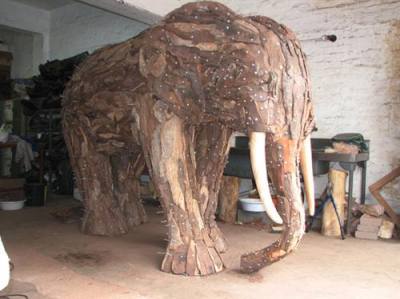 |
 |
| |
 Berichten voor Princenhage Berichten voor Princenhage |
| |
 Nieuwsarchief Nieuwsarchief |
| |
 Evenementen Evenementen |
| |
 Zoek winkel of onderneming Zoek winkel of onderneming |
| |
 Uitgaan en eten Uitgaan en eten |
| |
 Winkelen in België/Frankrijk Winkelen in België/Frankrijk |
| |
 Princenhage in foto's Princenhage in foto's |
| |
 Kerkelijk leven, moskee Kerkelijk leven, moskee |
| |
 Weerberichten Weerberichten |
| |
 RECLAMEFOLDERS RECLAMEFOLDERS |
| |
 Albert Heijn Albert Heijn |
| |
 Aldi Supermarkt Aldi Supermarkt |
| |
 Dirk van den Broek Dirk van den Broek |
| |
 Etos Princenhage Etos Princenhage |
| |
 ISPC-Hanos ISPC-Hanos |
| |
 Jumbo Jumbo |
| |
 Lidl Prinsenbeek en Breda Lidl Prinsenbeek en Breda |
| |
 Makro aanbiedingen Makro aanbiedingen |
| |
 Sligro folders Sligro folders |
| |
 Winkelhart Etten-Leur Winkelhart Etten-Leur |
| |
 Apotheken Apotheken |
| |
 Banken/geldautomaat/Mr Cash Banken/geldautomaat/Mr Cash |
| |
 Bibliotheek, digitheek Bibliotheek, digitheek |
| |
 Brandweer Brandweer |
| |
 Dierenzaken Dierenzaken |
| |
 Dokters, geneesheren, tandarts Dokters, geneesheren, tandarts |
| |
 Gas en licht, energie Gas en licht, energie |
| |
 Links naar andere sites Links naar andere sites |
| |
 Gemeente, afval, zorg, vervoer Gemeente, afval, zorg, vervoer |
| |
 Internet, WiFi Internet, WiFi |
| |
 Musea Musea |
| |
 Onderwijs, kinderopvang Onderwijs, kinderopvang |
| |
 Politie Politie |
| |
 Postkantoor Postkantoor |
| |
 Sport / recreatie Sport / recreatie |
| |
 Televisie kijken Televisie kijken |
| |
 Verenigingen, sociaal werk Verenigingen, sociaal werk |
| |
 Wonen in Princenhage Wonen in Princenhage |
| |
 Wijkraden in de omgeving Wijkraden in de omgeving |
| |
 Wijkblad-Lapteen-De Stem Wijkblad-Lapteen-De Stem |
| |
 Princenhage in een notedop Princenhage in een notedop |
| |
 Colofon Colofon |
| |
 Genealogie Kuipers Genealogie Kuipers |
| |
 Zonwering Breda Nooren van der Avoird Zonwering Breda Nooren van der Avoird |
|
|
4 Meter grote olifant passeert Princenhage (3-8) | Op maandag 3 augustus 2009 wordt de olifant Lux Themba vanaf de havens in Rotterdam naar bungalowpark de Stille Wille in Meijel bij Oirschot vervoerd. Deze olifant is door de kunstenaar Andries Botha gemaakt in opdracht van de Culemborgse architect Bert van der Kamp als aandenken aan zijn overleden echtgenote Annemarie. Het onzichtbare hart van de olifant bevat brieven van leden van deze familie. Andries Botha heeft al eerder dit soort olifanten gemaakt en tentoongesteld tijdens Kunst aan de Kust in Belgie in 2006. Annemarie had een zeer hechte band met Afrika en voornamelijk met de Afrikaanse olifanten. Bert vindt het belangrijk een connectie met dit bijzondere continent te behouden als eerbetoon en aandenken aan zijn vrouw. Hij heeft hiervoor Andries Botha ingeschakeld om een olifant voor hem te maken, met de naam: Lux Themba (vertaling: Lux vrouwelijke olifant)
Maandag 3 augustus zal Lux Themba ( 4 x 2,5 x 2 meter) vervoerd worden op een open vrachtwagen. Dit zal een spectaculair gezicht zijn. Vanuit Pijnacker naar Oirschot in Brabant. Om 09.00 uur zal de vrachtwagen vertrekken en om 11.00 uur in Oirschot aankomen. Halverwege die reis, dus tussen 10 en 10:30 uur zal de olifant langs Princenhage komen. Vanaf De Schicht heeft u natuurlijk een prachtig uitzicht! |
Monument to an evolutionary moment
ANDRIES BOTHA'S HEAVYWEIGHT SCULPTURE OF AN ELEPHANT, A MEDITATION ON THE COEXISTENCE OF LIVING THINGS MADE FROM INDIGENOUS WOOD AND GALVANISED STEEL, ASTOUNDED DURBAN AUDIENCES WHEN IT WAS RECENTLY EXHIBITED AT THE KZNSA GALLERY
You couldn't accuse Andries Botha of being an isolationist, not with his emphasis on education and the bringing together of skills, his public art commissions and his community projects. Yet his personal, gallery artworks can convey a sense of alone-ness, of having been made by a solitary figure who sits quietly and surveys the world.
It is a description that also fits Lux Themba, the two-metre high elephant that Botha displayed at the KZNSA Gallery, Durban, in February. The elephant, made from wooden shingles pinned onto a metal frame, belongs to the series Ungayithenga inhlizyo nomongo wami (Zulu for "You can buy my heart and soul"), which grew out of Botha's conception of the "elephant as postcolonial metaphor". Thankfully, the creature seems to have shed this burden, serving now as mascot and symbol of Botha's new Human Elephant Foundation, an umbrella body to encourage creativity and eco-mindedness.
"Artists are trained thinkers: it's a pity if this is limited to the symbolic forum"
"I've come late in the day to ecological awareness," says Botha. We meet, in a sunny café courtyard, first thing on a Monday morning in March, getting the week off to a running start. His grey hair in a ponytail, Botha has the very short nails and slightly plaster-dusted look of somebody who can fix things, make things from scratch, get stuff done. He pays attention to what he's doing and saying. "I've come late in the day, but it's never too late. We're at an evolutionary moment, at which popular consciousness is becoming more concerned with the coexistence of living things, the intimate relationships between individual consciousness and the external."
It is the public-private dynamic, he adds, that is at the root of the creative process.
But what's with the elephants? "There's an alchemical relationship between people and elephants," he responds. "Like us, they're dedicated, they're mammals, they live collectively, they communicate in complex ways. And we have a mythical, long and tempestuous, but respectful, relationship with them, because of their proximity. Then there's scale: they remind us that we're not as dominant, we're less than we thought."
And why was his particular elephant so popular with Durban audiences? (It really touched a chord, with repeat viewers dropping back to admire it and quiz the sculptor, to the extent that its residency at the KZNSA was extended.) "It was an object of contemplation," he responds. "There's something intimate about being up so close to the big thing, but also the sentimental relationship of standing next to a baby elephant. It also re-engaged notions of crafted beauty and the result of process in a rapid world." Another sentimental strand is that it is a memorial to a love affair: it was commissioned by Bert van der Kamp in memory of his dead wife Annemarie, and it contains, unseen, a wooden heart holding letters sent between members of the Van der Kamp family.
The work is certainly a far cry from Botha's monstrous creations of the 1980s, violent, sexual hybrids embodying the horrors of "the apartheid wars" – an expression culled from a caption appearing on his website. It is also unlike some of his smaller-scale, more recent pieces, including the pen and ink composite, Some Casual Thoughts Noticed over 5 Consecutive Days (2009), newspaper tracings rendered on a diaphanous paper, and the small embroideries and prints of a light switch, soap dish and tap included on his late 2007 show at Durban's Bank Gallery.
"I've always been moved by things that go unnoticed, not necessarily what's on the public stage," he says, in response to a question of whether, given his obvious socio-political concerns, he ever considered engaging in other ways than by art. "Artists are trained thinkers: it's a pity if this is limited to the symbolic forum, though we do need the symbolic. We mustn't abdicate inner space to power, but must protect this right to think, to be contemplative, introspective."
His own art training, set in motion by a dedication to Spiderman comics and a chance encounter with a book of renaissance sculpture, took place in Pietermaritzburg in the 1970s. Marvel to Michelangelo is quite a contrast, and at varsity Botha encountered other splits: between the ideologies he had been brought up with and the politics of Biko; between an elevated, European-style training and conflicting dialogues that advocated using the museum of the street, taking your creative register from your own landscape. Times may have changed politically, but Botha thinks there's still a huge divide in education and art, a clash of consciousnesses and a "manufactured urban schizophrenia". At issue is "how to authenticate the local without succumbing to parochialism, how to negotiate the contemporary world as multiple destinations".
Complex problems, but Botha's work displays a solidity and sense of certainty. I ask if he has doubts about his art. Yes, but without indulging in massive personal crises, he reveals. "Maybe I'm not so smart, but I'm simple enough to just chose my thing and get on with it. People have the capacity to be passionate about one thing at a time, and for better or for worse I've given the time to my art." There is an old-fashioned sort of sincerity about Botha's convictions, his dedication to making large objects and paying attention to insignificant ones. He is good at building bridges and finding reconciliation between different approaches: "I've dragged myself into libraries, I've travelled, I can talk the talk about art. But there has to be an authentic centre that can articulate itself at a human level: I love that shit."
Melissa McCarthy is a writer based in Durban and London. She is co-author of Get Your Documentary Funded and Distributed (2005), and a selector for the Durban International Film Festival
Melissa McCarthy
|
Overige nieuwsberichten |



